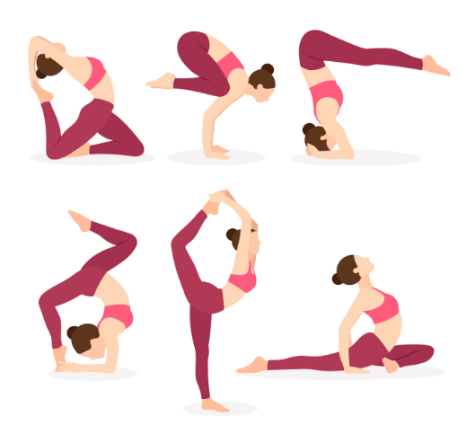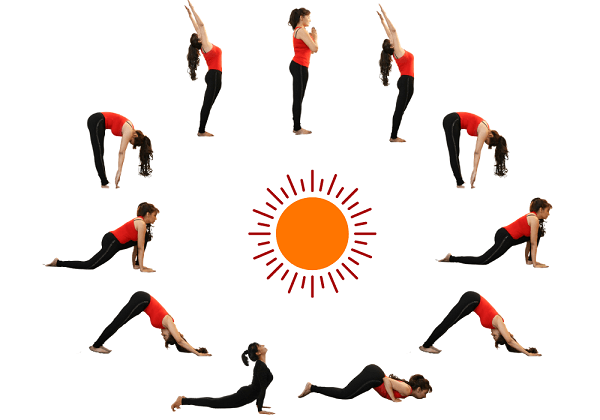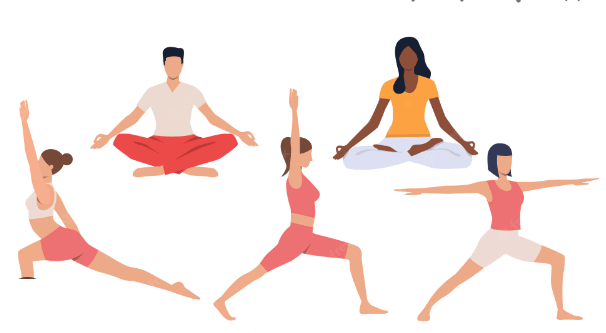Advantages and Disadvantages of YogaYoga is the art and Science of living a healthy lifestyle. It is a spiritual discipline based on a very delicate science that seeks to bring harmony between body and mind. The holistic approach to Yoga creates harmony in every aspect of life. Yoga is also renowned as a method of preventing disease in health promotion and the management of many health-related issues. In this article, you will be able to comprehend the benefits and importance of practicing Yoga. You can bring Yoga into everyday practice and transform your life. 
The Meaning of Yoga"Yoga" literally translates to "to connect" as well as "union." Beyond a simple practice of physical exercise, Yoga is the coming together of oneself or consciousness with the universal consciousness or spirit. Yoga is an approach to studying the nature and character of the mind that emphasizes practicing and direct experience. Yoga is an old art form that has its roots in the harmonizing process for the development of the mind, body, and soul. Yoga symbolizes the 'integration' of the person at the highest level. It encompasses a variety of methods and practices that are mentioned in the literature of Yoga and is collectively known as Patanjali's 'Yoga-sutra.' 
The Importance of the Role of YogaYoga is a way to promote a positive, healthy lifestyle to improve the mental, physical and emotional well-being of people. Yoga assists in building endurance, stamina, strength, and energy on a physical level. Yoga also gives you greater concentration and peace on an emotional level. This leads to inner and external harmony. Through Yoga, it is possible to deal with your stress levels and the negative effects they can have. Yoga provides stability to the body as well as the erratic mind. It improves the lubrication of ligaments, joints, and tendons throughout the body. Studies in the field of medicine indicate that Yoga may be the only form of physical exercise that provides wholesome conditioning since it massages all inside organs, glands, and organs. It helps reduce the chance of developing many illnesses. It can bring about a positive change in the life of anyone who practices it regularly. Advantages and Disadvantages of YogaYoga, in simple terms, is a fusion of two components; the mind and the body. Experts offer a myriad of explanations for the ancient practice. Originating in India, it has been practiced for over 5000 years. Patanjali is the father of Yoga. The practice consists of a series of breathing techniques, stretches, and postures that contribute to overall improvement and spiritual awakening, according to ayurvedic texts. Nowadays, it is practiced in a variety of different countries. Yoga can be seen as proof of why various medical and educational institutions are now focusing on this method and informing people about it to the maximum extent possible. To shed light on the benefits of Yoga, here are a few reasons to practice it. Advantages of Yoga
A lot of medical institutes conduct research every day about Yoga's benefits and effects, and many of these appear in various media. Most studies to date suggest that Yoga does not cause any adverse effects on a person's body and is one of the most certain exercises. Many chronic diseases are treatable with Yoga, including joint pain and arthritis, low blood pressure, heart disease, and muscle dysfunctions. In addition to fitness, Yoga has proven to provide great assistance for people suffering from stress and depression daily. 1. Yoga Treatment for Arthritis What is the value of Yoga in helping people living with Arthritis? It is medically established that vital and optimal flexibility is offered to our bodies through Yoga. This is why Yoga helps keep our bodies flexible and lowers the risk of developing deadly diseases such as Arthritis or Osteoarthritis. Patients with arthritis must consider taking a cautious approach to trying different types of Yoga but with caution. Since not all exercises are appropriate for them, it is recommended to practice regular repetitions of Yoga actions every day could be extremely beneficial. 2. Yoga Benefits People of All Ages The greatest benefit of Yoga Practice, whether at home or school, is the fact that one doesn't need to be at a certain age to do Yoga. The earlier you start, the more beneficial it will be. There are certain levels of Yoga that you can practice that are appropriate for various stages of life and different health issues. The frequency of repetition and intensity levels have a significant impact on children and seniors. Research has shown how Yoga is beneficial for older adults. It is beneficial as aging can cause immobility and immune problems. 3. Yoga Helps Reduce Anxiety Yoga influences your body, mind, and soul. It's a body and mind practice that follows a variety of integrative and complementary practices for health. Yoga combines mental and physical disciplines to help you attain peace in your mind and body. This helps you ease anxiety and stress. Yoga is the perfect blend of putting your whole body, senses, and your spirit in order with mindfulness, controlled breathing, Pranayama as well as body-based postures. Hatha yoga, for example, is a fantastic choice for stress reduction and is also among the most popular types of Yoga. 4. Yoga Helps You to Focus If you're a yoga student; yoga can benefit you in a variety of ways. The practice of Yoga with mindful postures, breathing techniques, and meditation can help you focus more effectively. Yoga-related exercises such as Kriya and Mudra increase your memory so that you can remember the ideas for better scores on the test. Not just for memory or focus, but the practice of Yoga also involves breathing so those suffering from problems with irritability can get to a peaceful state. 5. Yoga is Ideal for Athletes Yoga helps athletes gain endurance and perform better in gym and sports. Many of the top athletes take up Yoga in their routine. In addition, Yoga is a great way to stretch and bend your body. It also helps dancers in ballet since a complete stretching of the body happens while performing yoga poses. 6. Yoga Helps You Recover Faster In contrast to rigorous workouts, Yoga follows simple or complex techniques that focus on your muscles as well as internal organs. Yoga is not just beneficial for your physical health but gives you numerous benefits for the inner organs of your body, from the kidneys to the liver, the heart, and the lungs. Contrary to workouts in gyms, yoga relaxes your body and mind and remain active and energized simultaneously. The body eventually tends to recover more quickly in contrast to workouts that are intense. Disadvantages of YogaThe risks of Yoga mostly comprise injuries that are mainly physical and intense. Numerous causes of injuries make it difficult to practice Yoga. The causes of these problems include either carelessness or a lack of understanding of yoga poses. When practiced with moderation, meditation and breathing control (Pranayama) are free of negative side effects or any risk whatsoever. 1. Yoga Can Cause Blood Pressure While Yoga is the most effective way to remain healthy and fit, there are some truths and studies by the Telegraph that Yoga may increase the severity of carpal tunnel syndrome as well as destabilize joints and cause tendonitis. Also, it increases high blood pressure. This isn't an excellent thing for those who are taking medications for high blood pressure. 2. Yoga Poses Physical Risks If you're recovering from recent surgeries or injuries, Yoga may hinder your recovery. Certain advanced Yoga poses, such as yoga backbends and headstands, could cause more trouble because they can increase the amount of discomfort within your body. In the International Journal of Yoga Therapy 2008, 62 percent of Ashtanga Yoga practitioners reported a muscular skeletal injury, whose effect was long-lasting, lasting up to one month. Other adverse effects of Yoga are back injuries, muscle strains, and glaucoma-related issues. 3. The Risk of Having a Stroke The most severe of the conditions could occur if Yoga is done in excess or with no supervision. Based on the National Center for Complementary and Alternative Medicine, Yoga that is intense in exercises and bends could result in serious injuries, like strokes or nerve damage. Practitioners who are new to Yoga should consult an experienced instructor to stay clear of any dangers. 4. Hot Yoga is Not for Everybody Hot Yoga, also known as Bikram Yoga, is practiced under humid and hot conditions where the temperatures are higher than average. Certain people consider hot Yoga beneficial; however, for others, it could result in chaos. Hot Yoga disadvantages include dizziness and exhaustion, as well as dehydration and fatigue. This kind of Yoga is practiced at a temperature of 105 degrees. This is not recommended for people with heart conditions already. 5. Inexperience or Lack of Knowledge Can be Dangerous Untrained instructors and ignorance of the correct yoga postures can be equally harmful to you. Neck, wrist, shoulder, and spinal injuries are the most frequent when practicing yoga. It is important to ensure your Yoga Instructor is knowledgeable about how to assist you in completing yoga postures and avoiding overdoing the exercises. If you're just beginning and do Yoga in your own home, it's recommended to do your yoga routine in the same way as you do every day. Moving straight to the advanced level of Yoga will not be beneficial unless you begin at the basic, which is the simple yoga routine. The majority of yoga people make the same mistake which causes physical discomfort. |
 For Videos Join Our Youtube Channel: Join Now
For Videos Join Our Youtube Channel: Join Now
Feedback
- Send your Feedback to [email protected]
Help Others, Please Share










